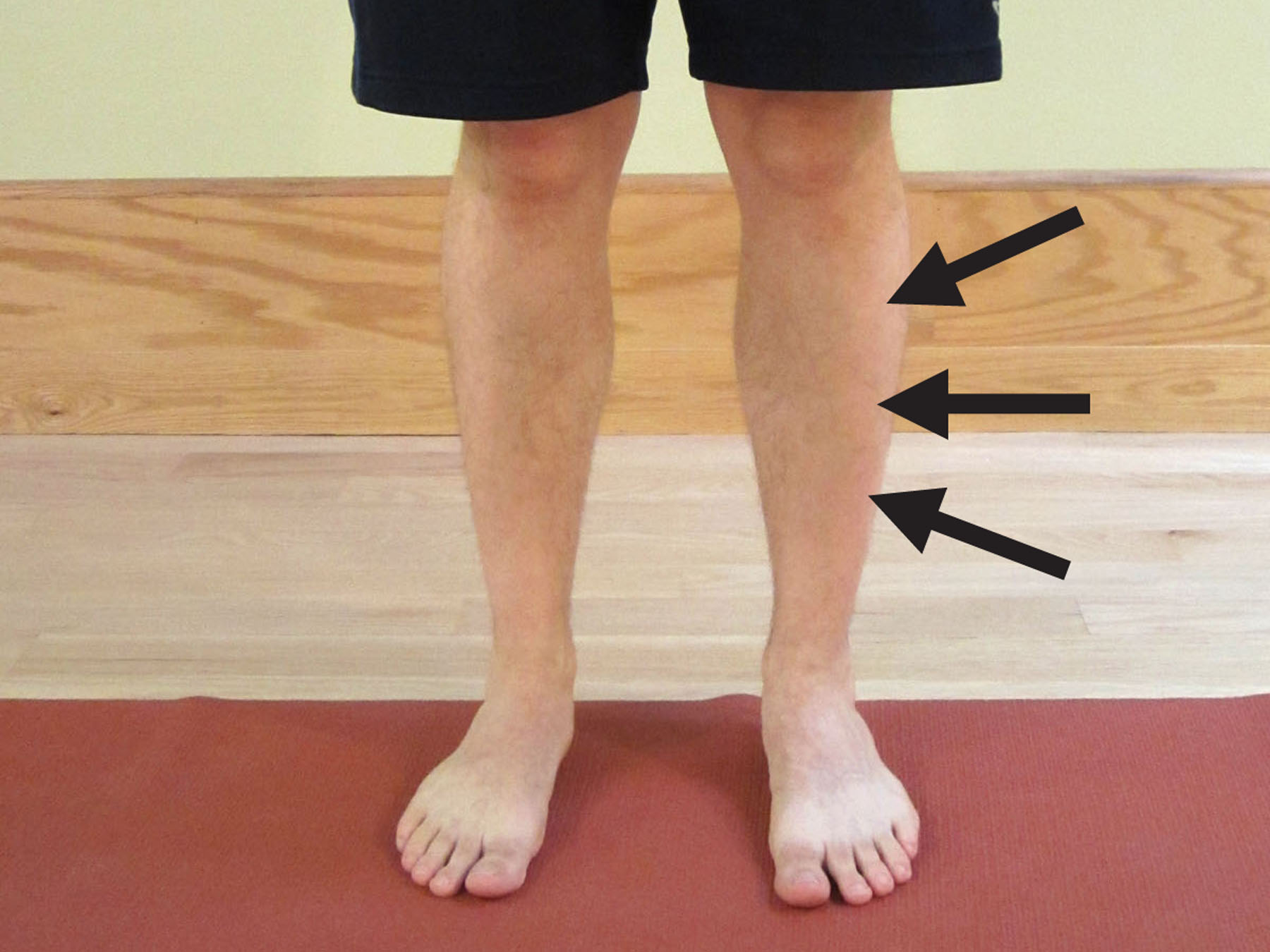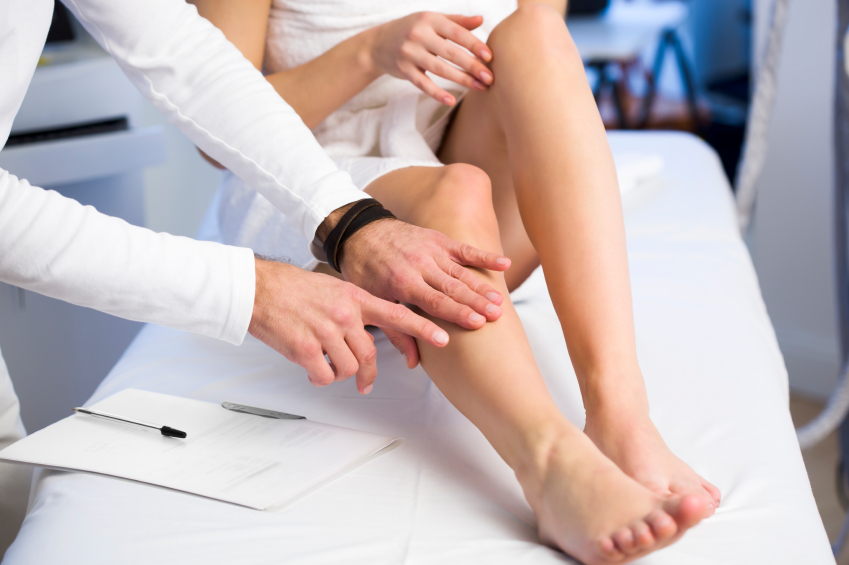If you’ve recently noticed a bump on your shin bone, it could be anything from a mild bruise to something more serious. While most bumps on the shin are benign, sometimes they can indicate an underlying condition that needs to be addressed.
One of the most common causes of a bump on the shin is a bone bruise. This type of injury occurs when the muscle and soft tissue around the shinbone are injured without breaking the skin. The pain and swelling associated with this injury usually go away in a few days with rest and protection from reinjury. However, if you notice persistent pain, swelling or discoloration after several weeks, it is important to consult your doctor.
Another possible cause of bumps on the shin is adamantinoma, which is a rare bone cancer that usually occurs in the lower leg. It often starts as a lump in either the tibia (shinbone) or fibula (calf bone). Symptoms may include persistent pain, swelling and/or discoloration over the mass area as well as a firm but palpable mass in the shin area with stretched and shiny skin over it. If you experience any of these symptoms it is important to see your doctor for furher evaluation and treatment.
In some cases, bumps on the shin may also signify an infection such as cellulitis or osteomyelitis which require immediate medical attention to avoid potential complications.
Regardless of what’s causing your bump on your shin bone, it’s important to get it examined by your doctor as soon as possible so that they can properly diagnose and treat whatever might be causing it.
Is a Lump on the Shin Bone a Symptom of Cancer?
Yes, a lump on the shin bone can be cancer in some cases. One of the rare types of bone cancer that may affect the shinbone is called adamantinoma. It typically begins as a lump in the middle of the tibia or fibula, which are bones in the lower leg. In addition to these bones, adamantinoma can also occur in oter areas such as the jawbone (mandible), forearm, hands, or feet. It is important to note that not all lumps on the shinbone are indicative of cancer; however, if you notice an unexplained lump on your shinbone that persists for more than two weeks, it is important to visit your doctor for evaluation.

Will a Lump on My Shin Disappear?
Yes, the lump on your shin should go away over time. Most tibial bone bruising injuries heal without complication within a few weeks. Rest and protecting the injury from further damage are key to allowing the healing process to take place. During this time, you may experience some pain that gradually subsides as the lump starts to diminish. With proper care and attention, your injury should heal completely with no lasting effects over this period of time.
Symptoms of a Shin Tumor
A shin tumor can feel like a firm but palpable mass in the shin area, accompanied by mild pain. The skin over the mass may appear stretched and shiny. It is important to note that shin tumors are typically very rare, and if you experience any of these symptoms it is important to seek medical attention to determine if they could be indicative of a more serious condition.
The Pain Associated with Cancerous Lumps on the Shin
Yes, cancerous lumps on the shin can be very painful. The pain is usually localized to the area of the lump and increases with activity, such as walking or running. It may also become worse over time or at night when the affected area is not being used. The pain can range from a dull ache to a sharp sensation and may be accompanied by swelling and redness in the area of the lump.
Investigating the Cause of a Weird Lump on the Shin
The lump on your shin could be caused by a variety of skin conditions like a cyst, wart, or abscess. Cysts are typically small, round bumps filled with fluid that can appear on any area of the body, including the shin. Warts are caused by the human papillomavirus (HPV) and oftn appear as a single bump or cluster of bumps on the shin. An abscess is a tender lump filled with pus that’s usually caused by an infection.
In some cases, the lump may have been caused by trauma to the shin bone due to an injury. Additionally, abnormal cell growth such as lipoma can cause non-cancerous lumps to form on the shin. It’s important to have a medical professional assess any unusual lumps you find on your skin in order to receive appropriate treatment and ensure it isn’t something more serious.

Warning Signs of Bone Cancer
1. Pain: Pain is the most common symptom of bone cancer and may be felt in the affected bone or area. It may come and go, be a dull ache, or become more severe over time.
2. Swelling: Swelling and redness may be present near the affected area if there is a tumor present.
3. Problems moving around: Difficulty walking or moving due to pain in the affected area may be a sign of bone cancer.
4. Feeling tired (fatigue): Fatigue is another common symptom of bone cancer as your body works to fight off the disease.
5. A high temperature (fever): A fever can indicate that your body is fighting an infection caused by an advanced stage of bone cancer.
6. A weakened bone: In some cases, a weakened bone can lead to fractures even with minimal pressure or activity, which can be an indication of bone cancer.
7. Weight loss: Unexplained weight loss can also be a sign that somehing is wrong and should be discussed with your doctor immediately if it occurs alongside other symptoms mentioned above.
Signs and Symptoms of a Cancerous Lump in the Leg
A cancerous lump in the leg is typically large, hard, and painless to the touch. It may appear suddenly without any prior warning and will steadily grow in size over time. It may be accompanied by other symptoms such as redness, swelling, or warmth around the area. If you notice a lump in your leg that fits this description, it is important to contact your doctor right away for evaluation and treatment.
Is a Lump on the Leg a Cause for Concern?
No, you do not need to be worried about a lump on your leg. It is much more likely that the lump is a benign growth, such as a lipoma or a fatty tumor, rather than cancer. While it’s important to have any new growth evaluated by your doctor or healthcare provider, it’s likely that it will turn out to be harmless.
Understanding a Shin Hematoma
A shin hematoma is an accumulation of blood outside the blood vessels that occurs as a result of trauma or injury to the tissue. The blood vessels are damaged and the blood pools in an area, resulting in a painful, swollen bruise. Shin hematomas can range in size from small, pin-point spots to large, tender areas. Depending on the severity of the trauma, shin hematomas can last anywhere from a few days up to several weeks before they heal.

Can Lipomas Occur on the Shin?
Yes, you can get a lipoma on your shin. Lipomas are benign tumors made up of fat cells that typically appear as small, soft, rubbery bumps under the skin. They can occur anywhere on the body, including the shin. If a lipoma is causing pain or discomfort, it can be surgically removed. The procedure is typically done under local anesthesia and involves making an incision in the skin to remove the entire tumor. Afterward, stitches will be used to close the wound and prevent infection.
Lumps on the Front of the Shins
The lumps on the front of your shins may be a sign of erythema nodosum. This is a skin condition that usually presents as red and tender lumps, most commonly on the shins. The lumps are collections of immune cells clustered in pockets within the subcutaneous (deepest) layer of the skin. It is important to get this condition checked out by a doctor so they can make an accurate diagnosis and suggest an appropriate treatment plan to help manage your symptoms.
The Consistency of Tumors
Tumors can be both hard and soft. On the outside, tumors may feel hard due to the dense nature of their tissue structure. However, individual cells within tumors have been found to vary in softness across the tumor, indicating that the overall texture of a tumor is not uniform. This means that tumors can appear hard from the outside, but will often have areas that are softer than others when felt or touched.
Identifying Cancerous Lumps
The only definitive way to tell whether a lump is cancerous is to have it biopsied by a doctor. During this procedure, the doctor will surgically remove some or all of the lump and analyze the tissue under a microscope. This allows them to check for any cancer cells present in the lump. Depending on the size and location of the lump, an imaging scan such as an MRI or CT scan may also be used to assess its characteristics and help decide if a biopsy is necessary.
What Does a Sarcoma Lump Feel Like?
A sarcoma lump may feel like a soft, painless mass under the skin or deeper. It can’t be moved around easily and may grow over time. It is important to remember that not all lumps are sarcomas, but if you have any concerns about a lump, it is important to speak to your doctor right away.
What Are the Symptoms of a Bone Tumor?
A bone tumor can cause a variety of sensations depending on its size and location. Generally, the most common symptom is persistent bone pain that increases over time, especially in the night. This type of pain may be described as a dull ache or throbbing and can make movement difficult if the affected bone is near a joint. Additionally, swelling and redness (inflammation) may occur over the affected bone, resulting in a noticeable lump. Other symptoms include weakness in the bone that makes it easier to fracture than usual, extreme fatigue and unexplained weight loss.
Conclusion
In conclusion, a bump on the shin bone can be a sign of a rare bone cancer called adamantinoma. The pain associated with this type of cancer is usually mild and may be worse at night or when the bone is in use. If you notice a firm, palpable mass on your shin along with stretched and shiny skin over it, it is important to see a doctor right away to get it checked out. Early diagnosis and treatment are essential for the successful management of this type of cancer.
